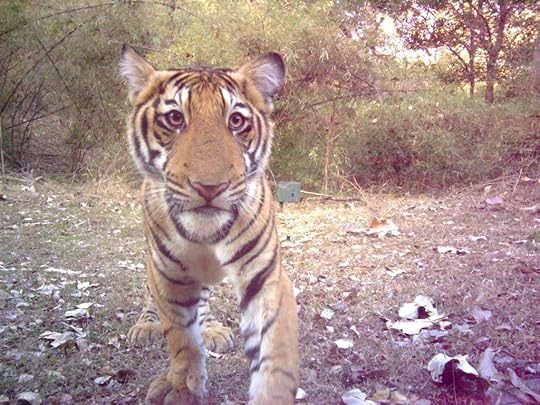
Camera traps are such a spectacular way to see animals in the wild without disturbing them. Here’s the latest example.
The press release is from the Wildlife Conservation Society (WCS):
NEW YORK (March 27, 2012) — A 4-5 month old tiger cub examines a remote camera last month in India’s Bhadra Tiger Reserve, a protected area where tiger numbers are increasing. The second camera can be seen in the background.
WCS conservationists, led by tiger expert Ullas Karanth, conduct annual surveys in the region, photographing and identifying individual tigers by their unique stripe pattern. WCS has been working in Bhadra Tiger Reserve since the late 1980′s. WCS’s partners led by DV Girish and other local conservationists have strongly pushed for increased protection in the reserve, and fought against forest exploitation, illegal settlements, and development projects that would have damaged the area.
Scientific data collected by WCS show that on account of conservation measures, prey numbers have doubled and tiger numbers are on the rise. Bhadra stands out as a model of tiger conservation success that affirms the value of the ‘source site’ strategy advocated by WCS for recovering wild tigers.


Published on March 26, 2013 07:37
